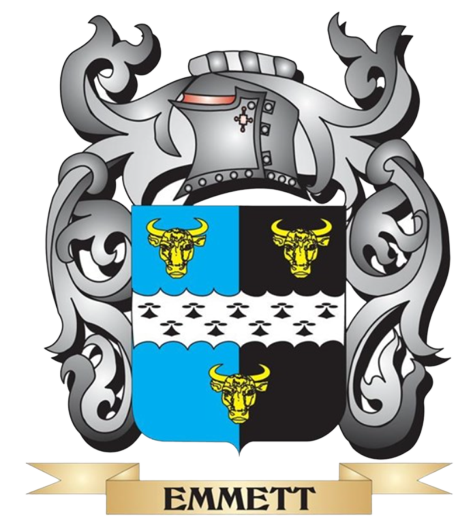AGENCY SUED FOR NOT OFFERING EXCESS UNDERINSURED MOTORIST COVERAGE
|
If you have never had an errors and omissions (E&O) claim – and hopefully you never will – you might have some misconceptions about E&O coverage and E&O claims. We’d like to clear up six that we come across frequently. Click Here for 2-page PDF
I Bet the Named Insured Doesn't Own the Building! Have You Asked?
Never assume the named insured owns the building. You need to ask what seems like a ridiculous question because ownership of the building may be held by another "person" related to the operation. The president of the corporation may own the building personally, but in his mind there is no difference. Not protecting the actual owner can create a huge gap in coverage. Errors & Omissions Prevention
Errors & Omissions Prevention
Agency E&O Case: False Information, Forged Signature and Policy Exclusion Take This 5 Question E&O QuizThe imagination is the workshop of the soul, where are shaped all the plans for individual achievement.
Before you can build anything worthwhile, you must first create it in your mind. Your mind is not constrained by physical limitations or boundaries. In the workshop of your mind, you can visualize things that have never been. It is said that Albert Einstein visualized how the universe might look if he were riding astride a beam of light through infinity. Then he worked out the mathematics to support his theory of relativity. You can use the power of your imagination to visualize solutions to difficult problems, to develop new ideas, and to see yourself achieving the goals you have set for yourself. |
Errors & Omissions Prevention
http://www.iii.org/es/insurance-topics/all-coverage-en-espanol Is Policy Language Always Sufficient?
Insurance policies are simply contracts and, when disputes arise, policy language is often relied upon to support arguments for or against coverage. This is a major reason why clear wording is very important. Court cases are a significant source that triggers changes in policy language. They may occur either through the impact of actual cases or indirectly through changes in law that have their origins in addressing wider spread situations on how insurance responds to certain types of losses. Examples involve confusion over water-related losses, concurrent causes of loss and confusion over how the word “insured.” With regard to more parties being granted insured status, insurers recognize that coverage obligations should be extended under certain circumstances. However, carriers want to have sufficient knowledge of parties that they may be obligated to reimburse or defend against claims. Click here for an excerpt of wording on “Who Is An Insured” found in the ISO Commercial General Liability’s coverage analysis in PF&M. If you appreciate the kindness shown you by others, say it with actions as well as words.
The people who enjoy the greatest financial and personal success in life are those who build lasting relationships — with business associates, friends, co-workers, and others. They take the time and trouble to stay in touch, and they make sure that when someone does a good deed for them, they respond in kind. Build your network of personal and professional friends by taking the initiative and being a friend. |
The greatest cure known is work.
Emotions are sometimes strange, volatile, and unpredictable. They do not always respond to logic and reason. They do, however, respond to action. If you have occasional feelings of loneliness, discouragement, or discontentment, the best way to kill such negative emotions is to work them to death. Almost nothing is as bad as it first seems, and there’s nothing like a hard day’s work to put everything in proper perspective. When you begin to feel negative emotions, dwelling on your misfortunes only makes you feel worse. Do your best to put them out of your mind and think about more positive, constructive things. Physical labor can help. Choose a task that doesn’t require a great deal of concentration, and then focus on accomplishing the task at hand.
Emotions are sometimes strange, volatile, and unpredictable. They do not always respond to logic and reason. They do, however, respond to action. If you have occasional feelings of loneliness, discouragement, or discontentment, the best way to kill such negative emotions is to work them to death. Almost nothing is as bad as it first seems, and there’s nothing like a hard day’s work to put everything in proper perspective. When you begin to feel negative emotions, dwelling on your misfortunes only makes you feel worse. Do your best to put them out of your mind and think about more positive, constructive things. Physical labor can help. Choose a task that doesn’t require a great deal of concentration, and then focus on accomplishing the task at hand.
By all means tell the world how good you are — but share the credit and reserve the blame.
You should let others know of your achievements, with these provisions: Do it with your actions first and make sure you share the credit with others who helped you along the way. A fundamental principle of leadership that has not changed over the centuries is: Share the credit for success with others, but take the blame for failures alone.
You should let others know of your achievements, with these provisions: Do it with your actions first and make sure you share the credit with others who helped you along the way. A fundamental principle of leadership that has not changed over the centuries is: Share the credit for success with others, but take the blame for failures alone.
|
Attention: Georgia Agents! 24 hours CE for $24 or join GIA for $99 per year and it's free for all agency staff!
Have you enjoyed at least 24 hours of Edu-Tainment? If yes, you are welcome to take the Final Exam Otherwise, continue to Lesson #8: Small Business Insurance |
E and O Prevention |
E and O Prevention |





